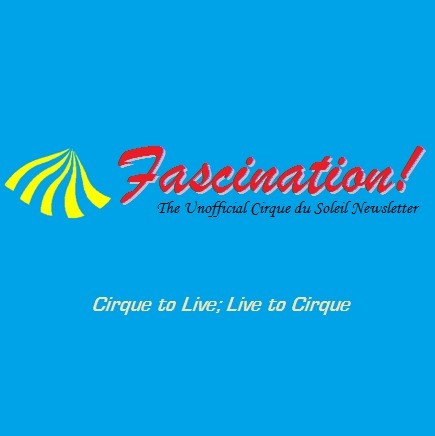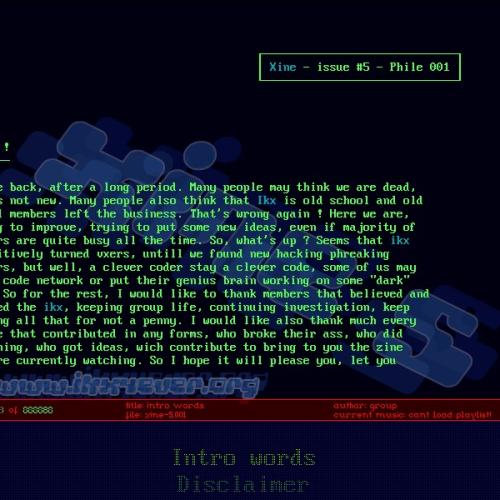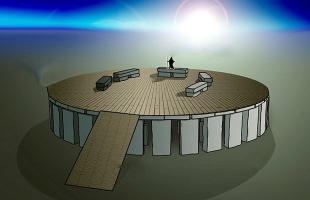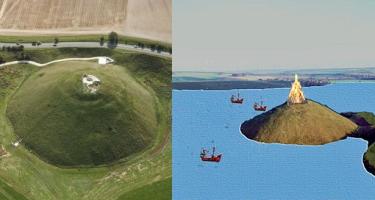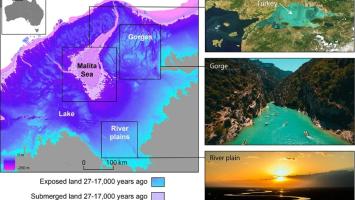Copy Link
Add to Bookmark
Report
Info-Atari16 Digest Vol. 91 Issue 214

Info-Atari16 Digest Tue, 16 Apr 91 Volume 91 : Issue 214
Today's Topics:
ATARI in Baltimore ??+
M-Tools, where to ftp from?
ST to Multisync Adapters
Welcome to comp.sys.atari.st
Welcome to the Info-Atari16 Digest. The configuration for the automatic
cross-posting to/from Usenet is getting closer, but still getting thrashed
out. Please send notifications about broken digests or bogus messages
to Info-Atari16-Request@NAUCSE.CSE.NAU.EDU.
Please send requests for un/subscription and other administrivia to
Info-Atari16-Request, *NOT* Info-Atari16. Requests that go to the list
instead of the moderators are likely to be lost or ignored.
If you want to unsubscribe, and you're receiving the digest indirectly
from someplace (usually a BITNET host) that redistributes it, please
contact the redistributor, not us.
----------------------------------------------------------------------
Date: 16 Apr 91 11:15:22 GMT
From:
noao!ncar!elroy.jpl.nasa.gov!usc!zaphod.mps.ohio-state.edu!rpi!uupsi!sunic!news
.funet.fi!hydra!kreeta!luoto@arizona.edu (Markku Luoto)
Subject: ATARI in Baltimore ??+
To: Info-Atari16@naucse.cse.nau.edu
Anyone KNOW a good (read: big=large and yet, reasonably priced)
RETAILER of atari-(st/TT) products
anywhere near Baltimore/Washington ??? -> Thanks!
>>>>>>>>>>>>>>>>>>>>>>>>>>>>>>>>>>>>>>><<<<<<<<<<<<<<<<<<<<<<<<<<<<<<<<<<<<<<<
>>>>>> " I'm completely operational & all my cicuits are functioning <<<<<<
>>>>>> correctly...correc...corr...co...-! " : HAl9000 <<<<<<
>>>>>>>>>>>>>>>>>>>>>>>>>>>>>>>>>>>>>>><<<<<<<<<<<<<<<<<<<<<<<<<<<<<<<<<<<<<<<
------------------------------
Date: 16 Apr 91 15:20:50 GMT
From: lanai!bcc@uunet.uu.net (Brian Cooper)
Subject: M-Tools, where to ftp from?
To: Info-Atari16@naucse.cse.nau.edu
In article <1991Apr10.130242.26931@lonex.radc.af.mil> longj@lonex.radc.af.mil
(Jeffrey K. Long) writes:
>SO...... where can I get the latest, greatest version of M-Tools, and what
>should I look for to avoid the problems I have seen posted in the past?
>
The canonical version of Mtools is indeed posted at the .mil site mentioned
in recent postings, but when I tried to FTP it (it is a 4-part set) one of
the parts absolutely refused to transfer completely. It invariably truncated
every time I copied it. I finally got a good copy at inria.inria.fr. The
version I located is v2.0, and has support for CD, FORMAT, LABEL, and ATTRIB,
plus a mkmanifest tool to assist in restoring unix file names that get lost
in the translation to DOS file names.
------------------------------
Date: 16 Apr 91 15:59:54 GMT
From:
noao!ncar!elroy.jpl.nasa.gov!usc!jarthur!petunia!csuchico.edu!ekrimen@arizona.e
du (Ed Krimen)
Subject: ST to Multisync Adapters
To: Info-Atari16@naucse.cse.nau.edu
In article <22001@natinst.natinst.com> glens@natinst.com (Glen Sescila) writes:
>
> Is anybody using the Practical Solutions "Monitor Master" that
>can reccomend it? Also does it have an audio jack since monitors don't
>have audio support?
The Monitor Master doesn't have multisync support. It can only switch
between two Atari monitors.
--
Ed Krimen ...............................................
||| Video Production Major, California State University, Chico
||| INTERNET: ekrimen@ecst.csuchico.edu FREENET: al661
/ | \ SysOp, Fuji BBS: 916-894-1261 FIDONET: 1:119/4.0
------------------------------
Date: 16 Apr 91 11:52:48 GMT
From:
noao!ncar!elroy.jpl.nasa.gov!swrinde!zaphod.mps.ohio-state.edu!uwm.edu!spool.mu
.edu!cs.umn.edu!simvax.labmed.umn.edu!davidli@arizona.edu
Subject: Welcome to comp.sys.atari.st
To: Info-Atari16@naucse.cse.nau.edu
Last update: 16 April 1991
Author: David Paschall-Zimbel (davidli@simvax.labmed.umn.edu)
Comments and suggestions welcome.
This issue is a day late. April 15 was a taxing day. (Sorry, but the pun
is mightier than the sword.)
I am currently looking for information on Atari ST magazines to be included
in the next 'welcome'. Please send me e-mail with titles, subscription
info, mini-review of the general contents, whatever.
DIRECTORY (new articles and articles with changes are marked with an '*'):
You may search for the capitalized keywords to find the related article.
WEL Welcome to comp.sys.atari.st
CSAST What sort of articles would interest people reading comp.sys.atari.st?
PD Where can I get Public Domain/Shareware software?
ARCS How do I deal with Archived files (.ZOO, .ARC, .LZH)?
ERR What does TOS ERROR nn mean? What do the bombs on my screen mean?
PAINT What is the format for [x] paint program data?
GDOS What is GDOS, and where can I get it?
* CLI What Command Line Interpreters are available?
TEX Is TeX/LaTeX available on the Atari ST?
LANG Public Domain/Shareware languages...
GNUC Is GNU C available on the Atari ST?
MINIX Is MINIX available on the Atari ST?
DEV How do I become a developer for the Atari ST?
ZNET Where can I get copies of ZNET?
PALS ST Pen Pals list
BOOKS What books are available for the Atari ST?
TIPS TIPS AND HINTS from other users
WEL
Welcome to comp.sys.atari.st
============================
This newsgroup is devoted to discussion about 16 bit Atari micros. At
present that includes the Atari 520ST, 1040ST, Mega ST, STe, and STacy.
There are also emulators for the Apple Macintosh and IBM PC/XT/AT available.
Finally, there is the Lynx (a game machine) and the Atari TT and ATW.
Most of the people who read this newsgroup are technically oriented.
The newsgroup serves as a resource for Atari users ... feel free to
contribute to the discussions.
Associated newsgroups include:
comp.binaries.atari.st ! uuencoded binary programs
comp.sys.atari.st.tech ! technical programming/hardware topics
comp.sources.atari.st ! uuencoded/shar sources
CSAST
What sort of articles would interest people reading comp.sys.atari.st?
======================================================================
The most interesting articles are technical articles, impressions of
software/hardware, information on Atari user-groups and shows, or helpful
hints on how to make better use of the machine and its software.
The least interesting articles are in the form of 'my computer is better
than...', especially when cross-posted outside of comp.sys.atari.st. If
you don't know how to eliminate other newsgroups from a reply to an article
which is cross-posted, ask your systems administrator.
'FOR-SALE' articles should be posted to misc.forsale, and ONLY local
distribution of comp.sys.atari.st. Those outside the United States have
little desire to read about that neat bit of [hard/soft]ware you're selling
when you live in the U.S.A. If you don't know how to restrict distribution of
a posting, ask your systems administrator.
Many articles are in the form of "How do I...?" or "Where do I...?" In this
article, I will try to answer some of the most-often asked questions.
PD
Where can I get Public Domain/Shareware software?
==========================================================
There are FTP sources and a comp.sources.atari.st/comp.binaries.atari.st
mail server. You can also try the commercial on-line services such as
GEnie, CompuServe, Delphi and Bix.
Using FTP, most files should be retrieved in BINARY format (at least those
ending with the suffix of .ARC, .LZH, .ZOO, .PRG, .TTP, .TOS)
For anonymous FTP: atari.archive.umich.edu [141.211.164.8]
User anonymous
<enter password>
cd /atari
For anonymous FTP in the UK: uk.ac.lancs.pdsoft
User pdsoft
Password pdsoft
This is a national public domain archive, available to sites in the UK only
via JANET. Mail access is available from within the UK - send mail to
archive-server@lancs.pdsoft for information.
For anonymous FTP in Europe: ftp.Informatik.Uni-dortmund.DE
[129.217.64.63]
Some selected Atari ST software is in the directory pub/comp/atari-st.
NOTE: The server has moved from unido.informatik.uni-dortmund.de. FTP
requests to the old address direct you to the address given above. I do
not know the current status of the old mailserver, but would appreciate
learning if it still exists.
For anonymous FTP in Europe: cs.uni-sb.de [134.96.7.254]
Contains the most interesting tools of the german PD-scene, most of the GNU
programs ported to the ST (including ports of emacs and bash and an extended
version of bammis library for gcc) and also ports of software posted to
comp.sources.unix, alt.sources and comp.sources.misc.
For anonymous FTP in Europe: archive.cs.ruu.nl
[131.211.80.5]
How to get ATARI-ST/index from the archive at
Dept. of Computer Science, Utrecht University:
NOTE: In the following I have assumed your mail address is john@highbrow.edu.
Of course you must substitute your own address for this. This should be
a valid internet or uucp address. For bitnet users name@host.BITNET
usually works.
by FTP: (please restrict access to weekends or evening/night (i.e. between
about 20.00 and 0900 UTC).
ftp archive.cs.ruu.nl [131.211.80.5]
user name: anonymous or ftp
password: your own email address (e.g. john@highbrow.edu)
cd /pub
don't forget to set binary mode if the file is a tar/arc/zoo archive,
compressed or in any other way contains binary data.
get ATARI-ST/index
by mail-server:
send the following message to
mail-server@cs.ruu.nl (or uunet!mcsun!hp4nl!ruuinf!mail-server):
begin
path john@highbrow.edu (PLEASE SUBSTITUTE *YOUR* ADDRESS)
send ATARI-ST/index
end
NOTE: *** PLEASE USE VALID INTERNET ADDRESSES IF POSSIBLE. DO NOT USE
ADDRESSES WITH ! and @ MIXED !!!! BITNETTERS USE USER@HOST.BITNET ***
The path command can be deleted if we receive a valid from address in your
message. If this is the first time you use our mail server, we suggest you
first issue the request:
send HELP
For Mail Service:
For the panarthea mail server, see Steven Grimm's monthly posting.
Panarthea holds all of the comp.sources.atari.st/comp.binaries.atari.st
postings. If you aren't reading these two newsgroups, you should consider
doing so.
ARCS
How do I deal with Archived files (.ZOO, .ARC, .LZH)?
=====================================================
Files ending with suffixes .ZOO, .ARC and .LZH are archive files. They are
binary files which may contain one or more other files in a compressed format.
Archive files usually take up less disk space, and for this reason have
become quite popular for transferring large files via modem.
In order to extract the files from an archive file, one must use an archive
program. Here are the correspondences:
ARC Use ARC.TTP
LZH Use LHARC.TTP
ZOO Use ZOO.TTP
These programs are all available via FTP from the atari.archive server, in the
/atari/archivers directory. Recommended files are:
arc.ttp - needed to extract the other archivers, once.
arc_602.arc - latest version of ARC, with the most fancy features
and quite a lot of documentation
lharc.arc
zoo_bin.arc
Julian Coleman recently (December 1990) uploaded an archive starter pack to
the atari.archive server. His announcement reads:
" I have just uploaded an archive starter pack to Atari.Archive. It contains
the following :
arc / lharc / uud / uue / zoo
U. Michigan monthly posting ( 05 Dec 90 )
The file is 'starter.tos' and is in the form of a self-extracting lzh
archive, so only needs to be downloaded ( in binary mode ! ) and run. The
archive contains sudirectories and needs about 350k when extracted."
This is probably the easiest way to get hold of the various archiving programs
if you have access via FTP and can transfer the binary file to your Atari ST.
The program is located in the main directory (ie. /atari/starter.tos)
There are also several GEM programs which act as 'shells' for the archive
programs. The most popular are Shareware offerings, also available on
atari.archive server. They are:
arcgsh35.zoo - written by Rainer Klute. e-mail will reach him
at klute@irb.informatik.uni-dortmund.de or
klute@unido.uucp, or klute@unido.bitnet
arcshl23.arc - written by Charles Johnson
Both are located in /atari/archivers
The GEM shells are recommended for inexperienced users (and appear to be quite
handy for the experienced user as well!) They require a copy of the archive
program -- in other words you need BOTH the GEM shell *AND* the archive
program in order to use the GEM shell.
Documentation on the use of the archive programs should accompany the archive
files mentioned above. To use ARC.TTP in order to extract these files, use
the command line:
xh xxxx.ARC *.*
where 'xxxx' is replaced by 'arc_602', 'zoo_bin', etc. For example
xh arc_602.arc *.*
will place all files within the arc_602.arc into the current directory. It
assumes you've clicked on the ARC.TTP program from the Desktop and have the
parameter dialogue box on your screen.
In many cases, simply typing a '?' or 'h' will provide an extensive list of
available options.
Source and binary code for archive programs have also been posted to
comp.sources.atari.st and comp.binaries.atari.st. They are available via
e-mail through the panarthea archive server. See Steven Grimm's posting for
more information on how to obtain files from panarthea.
ERR
What does TOS ERROR nn mean?
What do the bombs on my screen mean?
====================================
The information below was written, in part, by Darryl May, and posted on
GEnie in January (of ????) by John Townsend. The original also appeared in
the June 1988 issue of _Current Notes_ (122 N. Johnson Rd., Sterling, VA
22170). It has since found its way to me, and is being posted to
comp.sys.atari.st as a service to readers.
Alan Pratt wrote to tell me that the basic information may be correct, but
that it cannot be dubbed "official" unless it originates, on paper, from
Atari. This makes sense, as electronic communications are easily
modified, even accidentally.
Roland Waldi provided information regarding the difference between TOS and
GEM return codes which appears to be correct. The tables have been modified
to reflect his information.
The following is an unofficial list of the errors that can appear
while you are operating your ST computer.
Error description return code alert box #
======================================================
OK (no error)....................0
Fundamental error...............-1
Drive not ready.................-2
Unknown command.................-3
CRC error.......................-4
Bad request.....................-5
Seek error......................-6
Unknown media...................-7
Sector not found................-8
No paper........................-9
Write fault....................-10
Read fault.....................-11
General error..................-12
Write protect..................-13
Media change...................-14
Unknown device.................-15
Bad sectors on format..........-16
Insert other disk..............-17
Invalid function number........-32............1
File not found.................-33............2
Path not found.................-34............3
No handles left................-35............4
Access denied..................-36............5
Invalid handle.................-37............6
Insufficient memory............-39............8
Invalid memory block address...-40............9
Invalid drive specified........-46...........15
No more files..................-49...........18
Range error....................-64...........33
Internal error.................-65...........34
Invalid program load format....-66...........35
The last code is the infamous "TOS error 35"!
Also, some unofficial information via Alan Pratt:
Notably, you should add -48: ENSAME (not the same drive, occurs when
you call Frename and the two names you give aren't on the same drive),
and -67: EGSBF: you can't use Mshrink to GROW a block of memory.
Those bombs that appear on your screen are error messages from
the 68000 micro-processor.
Number
Description of bombs
===========================================
Reset: Initial PC2...............1
Bus Error........................2
Address Error....................3
Illegal Instruction..............4
Zero Divide......................5
CHK Instruction..................6
TRAPV Instruction................7
Privilege Violation..............8
Trace............................9
Line 1010 Emulator..............10
Line 1111 Emulator..............11
[unassigned, reserved]..........12
[unassigned, reserved]..........13
Format Error....................14
Uninitialized Interrupt Vector..15
[unassigned, reserved].......16-23
Spurious Interrupt..............24
Level 1 Interrupt Autovector....25
Level 2 Interrupt Autovector....26
Level 3 Interrupt Autovector....27
Level 4 Interrupt Autovector....28
Level 5 Interrupt Autovector....29
Level 6 Interrupt Autovector....30
Level 7 Interrupt Autovector....31
Trap Instruction Vectors.....32-47
[unassigned, reserved].......48-63
User Interrupt Vectors......64-255
PAINT
What is the format for [x] paint program data?
==============================================
There is a periodic posting of ST Picture Formats, edited by David Baggett.
The file is on the atari.archive server under /atari/graphics/picfmts.doc.
GDOS
What is GDOS, and where can I get it?
=====================================
GDOS stands for Graphic Device Output System (at least that's what my copy of
STart, volume 1 number 1 said...)
You can get a copy of "Everything You Ever Wanted to Know About GDOS (and
more)" by Douglas N. Wheeler from the atari.archive server. The file is
/atari/programming/gdos.arc.
There is a German version of GDOS available from the atari.archive server.
The file is /atari/utilities/amcgdos.arc.
Currently, there are no truly public domain sources for the GDOS system files
or font files (at least those supplied by Atari). You can get these files
with many commercial programs, such as Degas Elite, WordUp!, etc. You might
also want to check your local user group to see if they received a copy of the
WordFlair demo program (also available on GEnie). The demo program appears to
have the GDOS system and font files.
CLI
What Command Line Interpreters are available?
=============================================
There are a large number of Command Line Interpreters for the Atari ST.
Some of the more popular ones include:
gulam the 'classic' cli, somewhat UNIX in flavor
BASH GNU Bourne Again Shell - available under MINT
ksh Korn Shell - available under MINT
gemini MUPFEL is the shell used by the gemini environment
okami a German shell with many useful utilities built in
pcommand an MS-DOS-like shell
Check atari.archive under /atari/cli or /atari/mint, or check one of the
other FTP sites for files.
TEX
Is TeX/LaTeX available on the Atari ST?
=======================================
The TeX/LaTeX typesetting programs are available on the Atari ST. Check the
atari.archive server under /atari/tex. Fonts and device drivers
(including one for the Epson 9-pin printers) are available on the
atari.archive server.
The latest version of TeX (3.0) has recently been made available on the
atari.archive server. The files may be distinguished from the other TeX/LaTeX
files in the /atari/tex directory by their date (posted in December 1990) and
by the fact that they are all archived using LHArc (.LZH suffix).
Graham Higgins recently wrote a message in comp.sys.atari.st indicating the
minimum files needed to get a working TeX/LaTeX system up and running on the
Atari ST. He said:
You'll need, at minimum:
The binaries for LaTeX/TeX :StTeXBin
The style files :StTeXSty
The font macros :StTeXTfm
If you want to screen-preview, you'll need screen font files (showdvi)
If you want to print locally, you'll need printer font files (dvifont)
Allow 5Mb.
LANG
Public Domain/Shareware languages...
====================================
Check the atari.archive server under /atari/languages. Currently included:
abc
apl Demo and 'J' j_29.arc,apl68000.arc
forth Don't know which, I prefer BRADLEY FORTH
FORTRAN77 BC-FORTRAN version 'C' bcf.lzh
icon ICON icon2.arc,icon_bin.arc
modula-2 From Germany modula2.zoo
Sozobon C Most excellant
Elan
xlisp
xprolog
xscheme
GNUC
Is GNU C available on the Atari ST?
===================================
You can also get the GNU C program, which runs on 1 megabyte Atari ST systems.
For more than minor programming, you may need to upgrade to 2 or more
megabytes, as the GNU programs generally assume you've got plenty memory.
GNU C for TOS is available via anonymous FTP on atari.archive. It is also
available via anonymous FTP on cs.uni-sb.de [134.96.7.254] and most of the
other European FTP sites.
MINIX
Is MINIX available on the Atari ST?
===================================
MINIX is a UNIX-like operating system for the IBM PC, XT, AT, 386,
and PS/2, as well as the Apple Macintosh, Commodore Amiga, Atari ST, and
later in 1991, Sun SPARC. It is available with all the source code for
the entire operating system, the libraries, and nearly 200 UNIX-like
utilities.
Demonstration disks for the IBM PC line and Atari ST are available for free
via anonymous FTP for people on the Internet. A Macintosh version will be
online soon. (If you can't wait, see below.)
To get a free demo disk and the manual, use ftp to connect to
ftp.cs.vu.nl (192.31.231.42) and look in pub/minix/demo. The READ_ME
file describes the contents of the directory and how to use it. Be sure to
fetch and read this first. It contains important information.
If you don't have FTP access, you can buy the demo disk package from Prentice-
Hall for $10 by calling (201) 767-5969 or FAX (201) 767-5625. Please DON'T
ask me to send it by email. I have quite enough work already thank you.
The ordering numbers for Prentice-Hall are:
- MINIX 1.5 IBM demo disk (0-13-582768-x) (in stock now)
- MINIX 1.5 Atari demo disk (0-13-582792-2) (in stock now)
- MINIX 1.5 Macintosh demo disk (0-13-582784-1) (in stock now)
Please note that although the demo disks are available for free on line,
MINIX itself is copyrighted software and is not available on line. The
demo disks are also copyrighted, but permission is hereby granted to
upload and use them for evaluation purposes. The READ_ME file tells how
MINIX can be ordered.
AS A COURTESY TO US, PLEASE DO NOT FTP DURING BUSINESS HOURS (EUROPEAN
TIME). PLEASE FTP AFTER 11 A.M. EASTERN STANDARD TIME.
If you want to follow the MINIX discussion, read the comp.os.minix
newsgroup, which is quite active and has almost 50,000 subscribers.
Have fun!
Andy Tanenbaum (ast@cs.vu.nl)
DEV
How do I become a developer for the Atari ST?
=============================================
Contact Gail Johnson, Atari Rep Person, (408)745-2568
[UNITED STATES ONLY. IF YOU LIVE OUTSIDE THE UNITED STATES, CONTACT
YOUR COUNTRY'S ATARI HEADQUARTERS FOR MORE INFORMATION.]
Gail can explain the program to you, and send an information packet if you
desire.
Atari has gone to a 2-tier developer membership. The 'higher quality'
developer support goes to commercial developers, and costs $250. The
'no-hand-holding, no announcement of company future products, no access
to discounted hardware' goes to noncommercial developers, at an initial cost
of $125, plus $50 renewal fee each year.
Both tiers receive the ST/TT Developer Kit and all developers have to fill
in an application form and a non-disclosure agreement. Contact Gail for
more information.
ZNET
Where can I get copies of ZNET?
===============================
ZNET on-line magazine is available on CompuServe and GEnie. You can also get
copies mailed to you by sending an e-mail message to
stzmagazine-request@virginia.edu
indicating you wish to subscribe.
They won't get to you on Friday (which is when they're posted), but Greg
Lindahl provides an excellent service to the networking community by sending
these out.
ZNET and some information from the Current Notes user magazine are also
available from the atari.archive server under /atari/magazines.
PALS
ST Pen Pals list
================
Simon Chappell is compiling a list of people interested in exchanging
paper-based mail "of interested parties who could then
keep in touch and prevent themselves losing touch with the ST community
at large (this would be especially easy if someone who still had net
access could summarise current topics or forward news and advice!)"
He is accepting entries in this format:
eg Simon Chappell.
s61304@uk.ac.psw.pa (NOTE: NO LONGER VALID ADDRESS...)
51 Amherst Road, Penny-Come-Quick, Plymouth, Devon, PL3 4HJ. UK.
C, operating systems (UNIX, VMS) & relational databases.
Contact Simon at his paper mail address if you are interested.
BOOKS
What books are available for the Atari ST?
==========================================
The (Almost) Complete Guide to Atari Reference Books
Compute! Publications,Inc.
PO Box 5406,Greensboro NC
27403(919-275-9809)
Computes Technical Refence Guide Volume One. VDI
Sheldon Leeman
ISBN 0-87455-093-9
Computes Technical Refence Guide Volume Two. AES
Sheldon Leeman
ISBN 0-87455-114-5
Computes Technical Refence Guide Volume Three. TOS
Sheldon Leeman
ISBN 0-87455-149-8
Learning C. Programming Graphics on the Amiga and Atari ST.
Marc B. Sugiyama and Christopher D. Metcalf
ISBN 0-87455-064-5
Compute's ST Applications Guide. Programming in C
Simon Feild,Kathleen Mandis and Dave Myers
ISBN 0-87455-078-5
Scott,Foresman and Company.
Professional Publishing Group
1900 East Lake Avenue,Glenville IL
600025
Learning C on the Atari ST
Joseph Boyle Wikert
ISBN 0-673-18738-1
Sybex Inc.
2344 Sixth St.
Berkely,CA
94710
Programmers Guide To GEM
Phillip Balma and William Fitler
ISBN 0-553-34397-1
Taylor Ridge Books
PO Box 48
Manchester, Connecticut (no zip listed) usa
(203)643-9673
C-manship Complete, $19.95
Calyton Walnum
No ISBN
"a decent book on programming your st gem/aes/vdi plus other stuff that is
based on the 31 articles that Clayton Walnum wrote for Analog. It was written
on a mega 4 with Calamus."
Addison-Wesley Pub.
68000 Assembly Language
Donal Kantz & James Stanley
ISBN 0-201-11659-6
"An interesting book on 68000 for the Atari (and amiga too, but both in
the abstract)"
****************************************************************
*
* THE FOLLOWING BOOKS ARE CURRENTLY OUT OF PRINT
*
Abacus Software,Inc.
5370 52nd Street,S.E.
Grand Rapids,MI
49508
Atari ST Internals
K Gerits,L. Englisch and R. Bruckmann
ISBN 0-916439-46-1
Atari ST GEM Programmers Reference
Norbert Szczepanowski and Bernt Gunther
ISBN 0-916439-52-6
Atari ST 3d Graphics Programming
Uwe Braun
ISBN 0-916439-69-0
Atari ST Disk Drives Inside and Out
Uwe Brawn,Stephan Dittrich and Axel Schramm
ISBN 0-916439-84
Atari ST Machine Language
B.Grohmann,P.eidler and H.Slibar
ISBN 0-916439-48-8
Atari ST Introduction to MIDI Programming
Len Dorfman and Dennis Young
ISBN 0-916439-77-1
Bantam Books,Inc.
666 5th Avenue
New York,New York
10103
Atari ST Application Programming
Lawrence J. Pollack and Eric J.T.Weber
ISBN 0-553-34397-1
****************************************************************
*
* This List can be freely distributed and added to
* All I ask is that people identify the added information as
* their own
* John Henders
* Vancouver,BC
* On Usenet uunet!ubc-cs!van-bc!jhenders
* On ForumST John henders@448
* On GEnie c/o D.LEMAY2
*
* C-Manship & 68000 Assembley Language suggested by Joe Gaudreau [DPZ]
TIPS
TIPS AND HINTS from other users
===============================
Any 'multisync' monitor which handles 70 video fields a second can be used
with the ST; the custom cable involves no tricks, or commercial ones are
available. The original NEC multisync does NOT handle 70 fields a sec.
More than 3 bombs often means more than 1 error, so interpretations are
tricky.
An ST-formatted disk which is not readable by a PC can be made readable by
putting the 3 bytes EB 34 90 (those were 3 bytes of hex) at the beginning
of the boot sector (sector 1 of track 0, I believe). This can be done with
either an ST or PC absolute sector editor.
Some (older) PC-3.5"-drives cannot deal with the short track-header produced
by ST formatters. On those drives, ST-formatted disks are not readable,
independent of their boot sector contents. The other way, however, does
always work: format on the PC.
When using disks formatted on a PC in an ST, make sure to insert and access
a disk with a different serial number in between disk changes.
For those with the 'inaccessible' mouse and joystick ports, a joystick
extender cable will make life easier. The Y-cable joystick extenders make
it extremely easy to keep mouse and joystick connected to port 0, and a
joystick extender cable in port 1 makes for easy hookup after you've moved
the machine.
BARREL is a program which can redirect printer-data to a file. It comes in
handy when your printer is unavailable, and the program does not already
have an option to 'print-to-a-file'. (It is available on the atari.archive
server.)
===========================================================================
I would appreciate feedback, comments, suggestions for more TIPS AND HINTS,
etc. E-mail can reach me at the following:
davidli@simvax.labmed.umn.edu Internet
davidli@simvax BITnet
-- David Paschall-Zimbel
------------------------------
End of Info-Atari16 Digest
******************************










